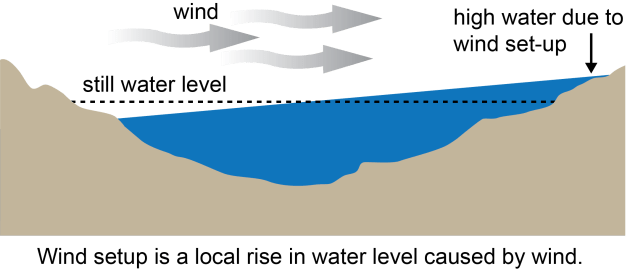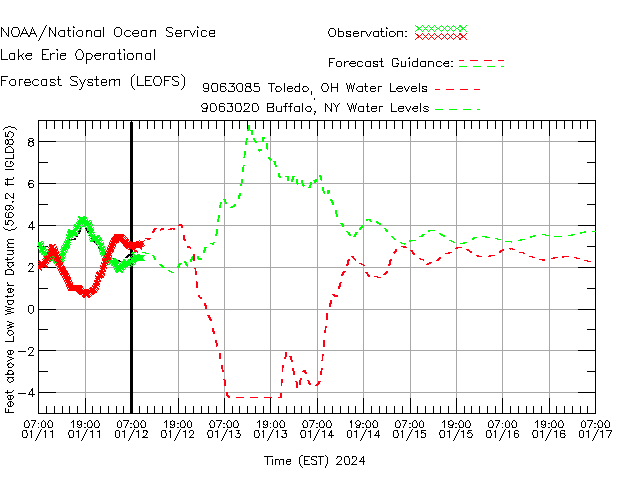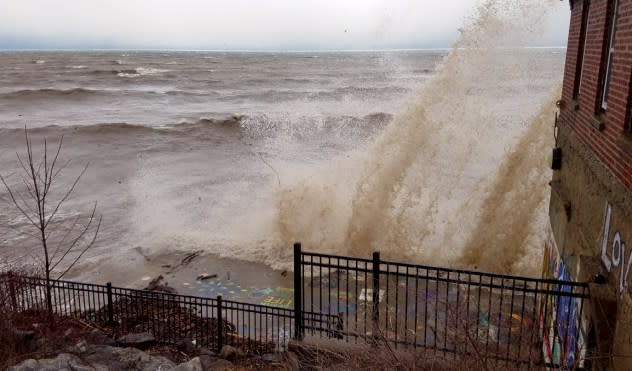Lake Erie residents may experience rare 'seiche' from powerful storm
People living on the east shore of Lake Erie may see the lake's water level rise into their yards and onto roads during this weekend's storm and Arctic invasion. At the same time, residents on the west shore will watch the lake recede far away from them. This phenomenon is what meteorologists call a 'seiche.'
Witnessing a seiche is like looking at the storm surge and waves from a hurricane. When seiches occur during the winter, they add heavy snow and ice into the mix on top of the flood threat. In the video below, Reed Timmer documented the rise of water and debris from a seiche at Buffalo, New York, on Dec. 23, 2022, along with high waves, winds and heavy snow.
BIG-TIME SEICHE storm surge flooding at Buffalo Naval Park with winds over 60 mph. Dangerous #blizzard conditions pic.twitter.com/SnZZDQrRHI
— Reed Timmer, PhD (@ReedTimmerAccu) December 23, 2022
Because of the increased water levels, already destructive waves can reach new heights. If the lake has partial ice coverage, damage can also occur as waves throw the ice toward shore.
While the damage from a seiche can be similar to a storm surge from a hurricane, a storm surge would typically be directed at one particular area on the coast, whereas a seiche can damage both shores.
 |
A seiche occurs when wind forces water across a lake, creating high water on one end and low water on the other. (NOAA) |
For Lake Erie, the largest seiches occur when high winds blow from southwest to northeast, which matches the orientation of the lake. The water is pushed northeastward by high winds then sloshes back in the other direction and continues to oscillate at lower levels. This can happen with any small body of water.
This weekend, Lake Erie's level at Buffalo is forecast to rise nearly 7 feet higher than before the storm, while at Toledo, Ohio, on the west side, levels will drop by 10 feet.
 |
The water level forecast for Toledo, OH, and Buffalo, NY shows a seiche this weekend, with the water level at Buffalo rising but Toledo falling. (NOAA) |
The largest known seiche on Lake Erie was a 22-foot event that killed 77 people and dammed Niagara Falls with ice, temporarily stopping the waterfall from flowing. More recently, a 16-foot seiche flooded homes in Buffalo in 2008.
 |
Seiche waves strike a shoreline structure in Buffalo, New York, in April 2018. (NYSDEC) |




